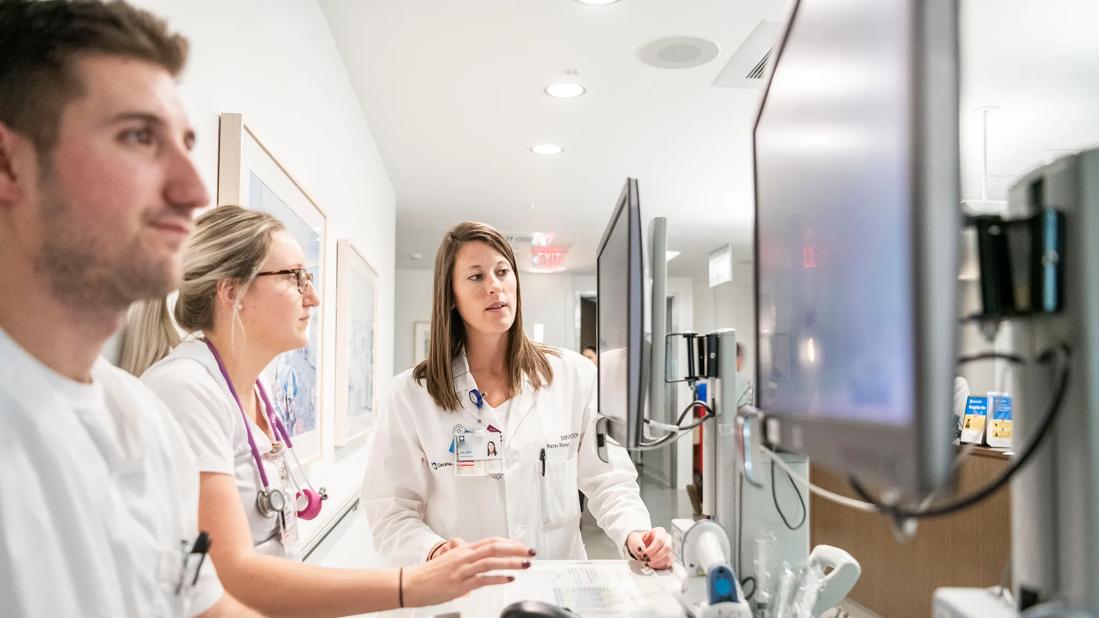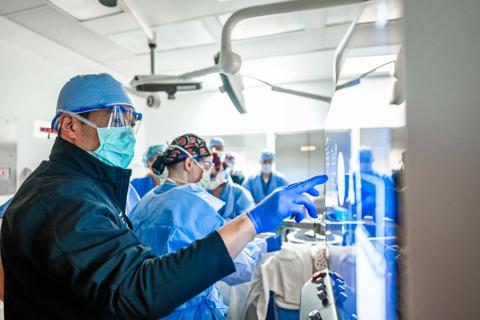Findings also indicate reduced risk of serious liver events

A new study by Cleveland Clinic researchers suggests that sodium-glucose co-transporter-2 inhibitors (SGLT2i) are safe for patients with cirrhosis. The inhibitors, which are known to provide significant benefits to patients with Type 2 diabetes, were also shown to be associated with reduced risk from severe cirrhosis complications, including mortality. This is the first time SGLT2i drugs have been studied in patients with severe liver disease.
Advertisement
Cleveland Clinic is a non-profit academic medical center. Advertising on our site helps support our mission. We do not endorse non-Cleveland Clinic products or services. Policy
The findings should give providers confidence in prescribing the medication to cirrhosis patients who are also being treated for diabetes, says co-author Dian Chiang, MD, a gastroenterologist at Cleveland Clinic’s Digestive Disease Institute. Providers should also potentially consider the inhibitors for treating the complications of cirrhosis itself, he adds.
“Patients who suffer from liver disease, including cirrhosis, may have physiology changes that require additional consideration when choosing the right medication to control their diabetes,” he says. “Physicians should consider this type of medication favorably because it seems to be associated with additional benefits beyond just blood glucose control.”
Dr. Chiang notes that because many medications are contraindicated for severe liver disease, clinical trials often exclude patients with cirrhosis. As a result, there is a lack of evidence for the safety and efficacy of many medications in this patient population.
At the same time, he says, patients with cirrhosis suffer from severe illness and several potentially serious complications, including fluid buildup, variceal bleeding, and electrolyte imbalances, and there is an unmet need for more treatment options.
This research group focused on SGLT2i medications because they had previously been shown to provide cardiovascular and renal protection in non-cirrhosis patients with Type 2 diabetes.
“We were hoping to see if this medication would help improve some of those endpoints in patients with cirrhosis,” Dr. Chiang says.
Advertisement
For the retrospective study, researchers analyzed data from the TriNetX database. They compared 4,931 patients with cirrhosis who had been prescribed an SGLT2i medication along with spironolactone and furosemide, with the same number of patients who were just spironolactone and furosemide.
In addition to determining that the inhibitor was safe for this patient population, researchers found that the SGLT2i medications were also associated with a significantly reduced risk of all-cause mortality, hospitalization and serious liver events. It was also associated with a significantly lower incidence of complications including hyponatremia, ascites and variceal bleeding. The SGLT2i group also saw a decreased incidence of hypoglycemia.
“This is a population that’s quite sick, and many medications may have serious adverse events that were not identified in clinical trials,” he says. “So, even though this safety result is what we were hoping for, it’s still a surprise.”
The research group plans to follow up on the paper with two additional studies. The first, another retrospective study, will look at outcomes in closer detail, including whether the underlying cause of cirrhosis matters and which of the three SGLT2i medications on the U.S. market offers the greatest benefit. A second prospective study would validate the findings using the best-performing of the three drugs.
The study, “Association of Sodium Glucose Co-Transporter-2 Inhibitors and Serious Liver Events in Patients with Cirrhosis on Diuretics: A Global Cohort Study,” was presented at the annual meeting of the American College of Gastroenterology.
Advertisement
Advertisement

Study reveals key differences between antibiotics, but treatment decisions should still consider patient factors

Findings could help clinicians make more informed decisions about medication recommendations

The SPECCIAL study is the first to examine long-term clinical outcomes

Findings are first to provide underlying explanation, linking the diagnosis to high-immune activation and worse clinical outcomes

Histotripsy is noninvasive and may generate abscopal effect

IBAT inhibitors, elastography and more

New device offers greater tumor control for malignant liver lesions

Reviewing how the drug can be incorporated into care